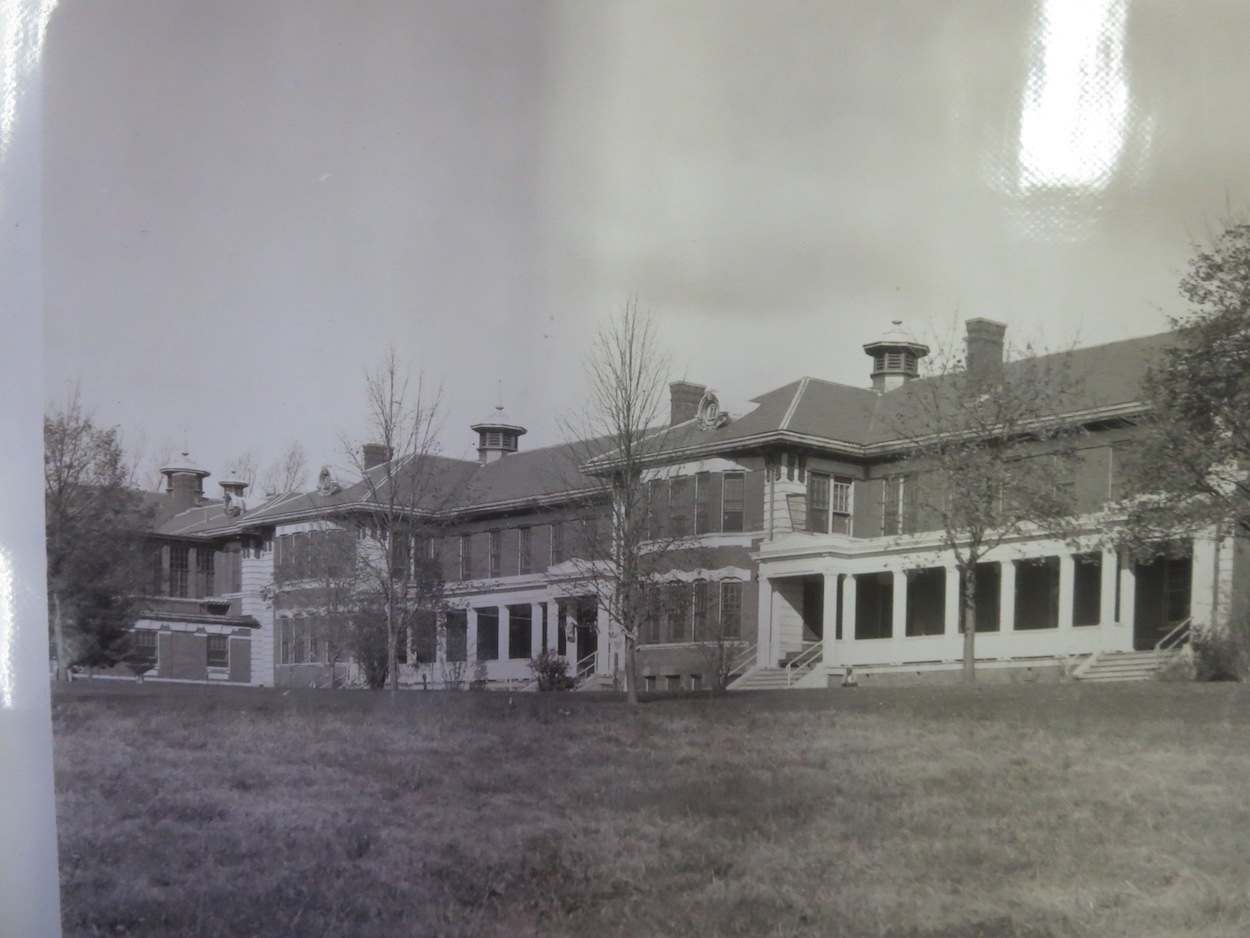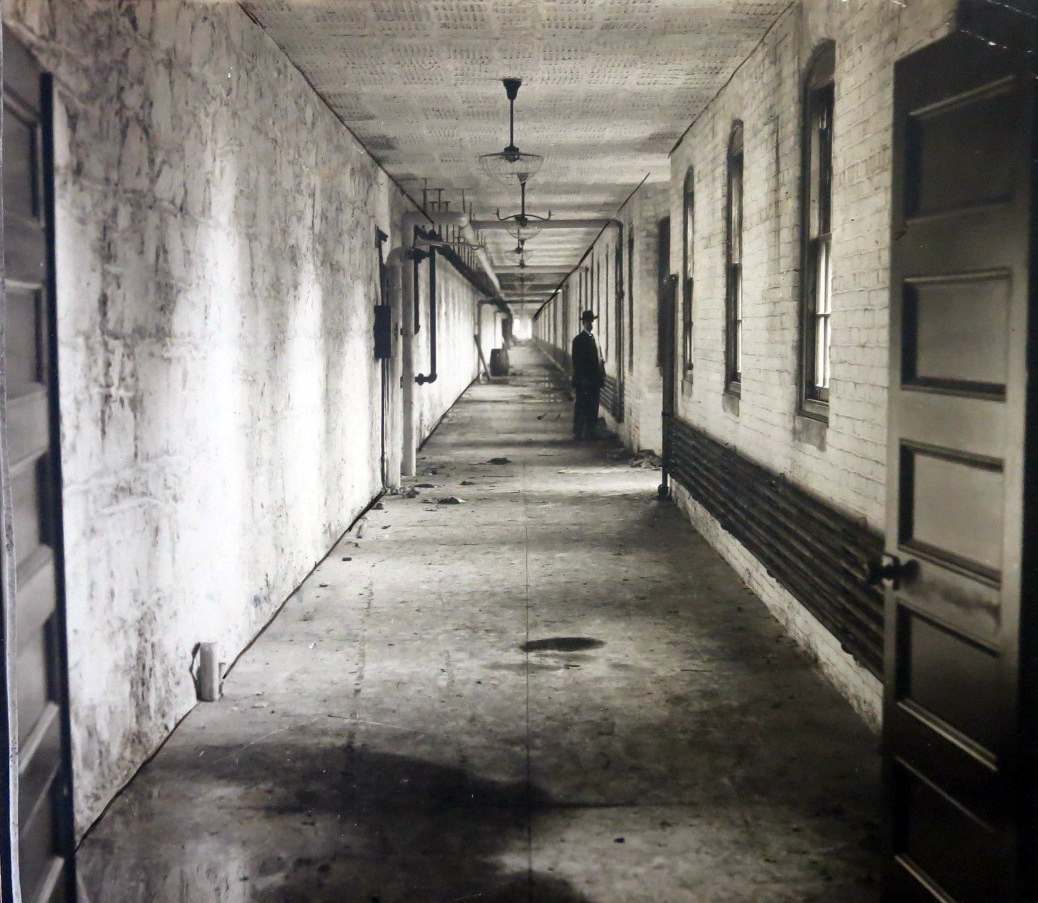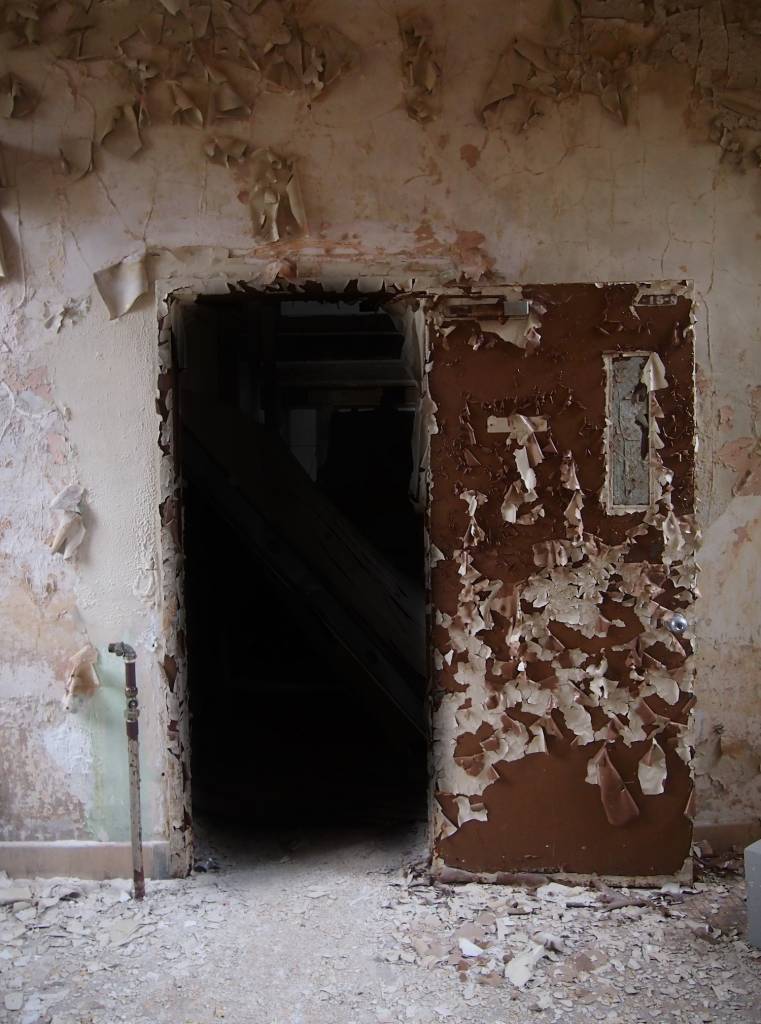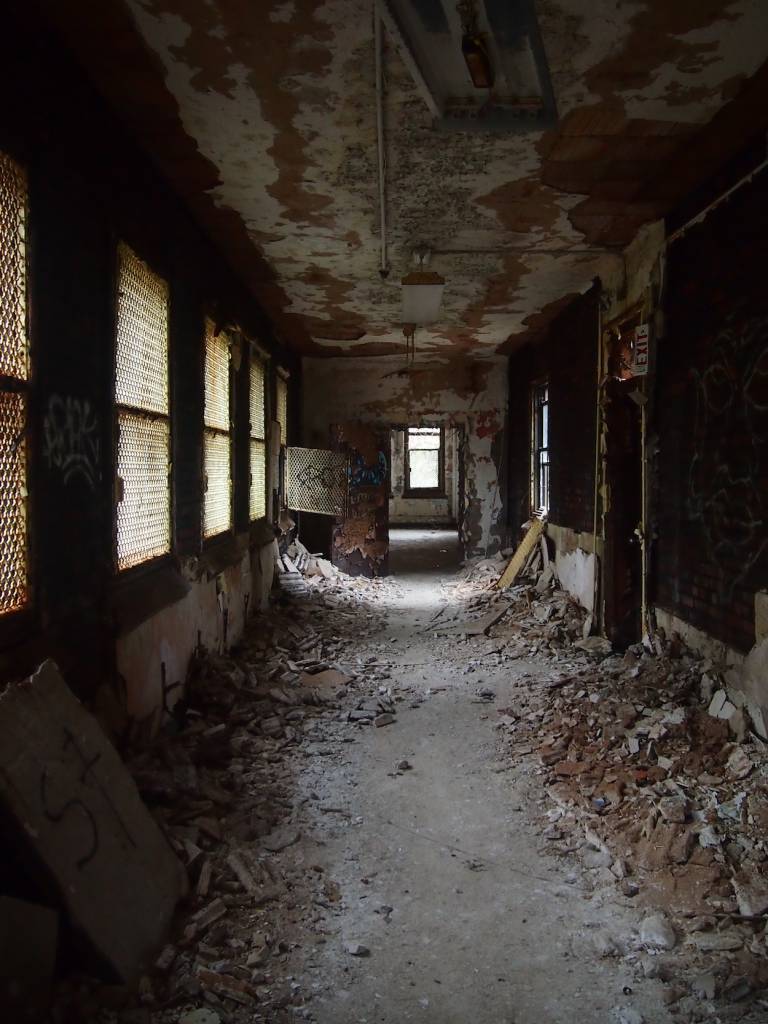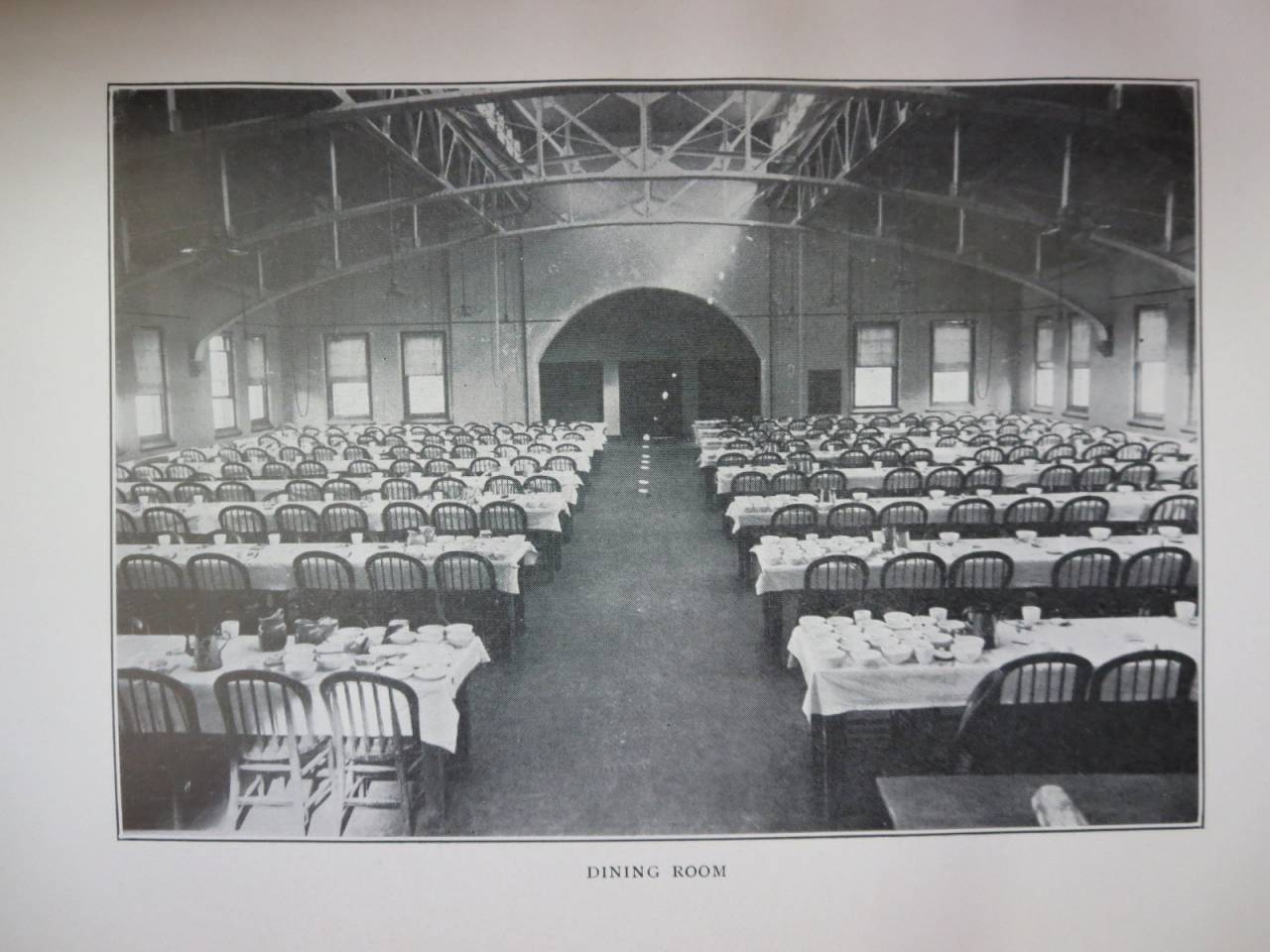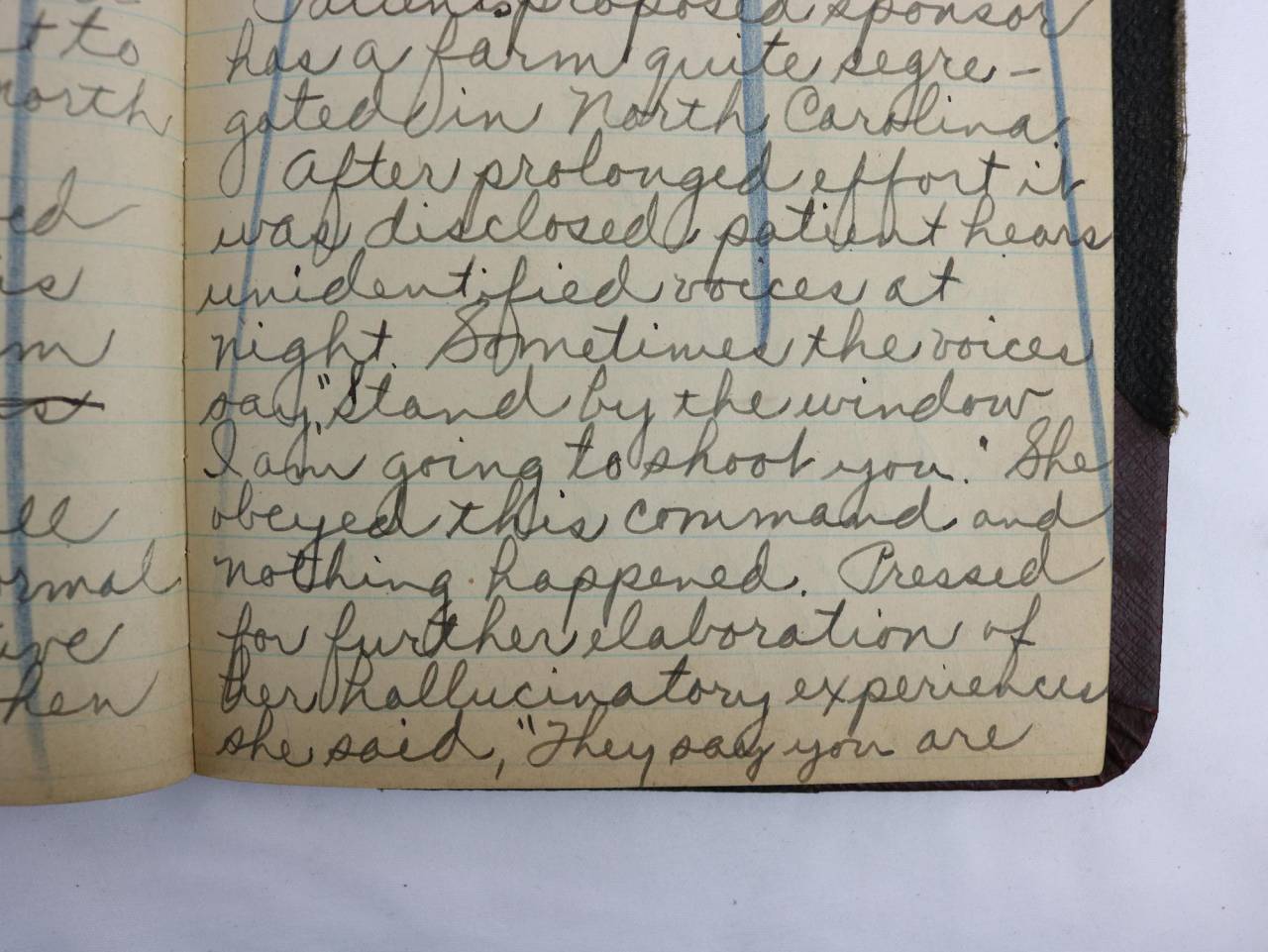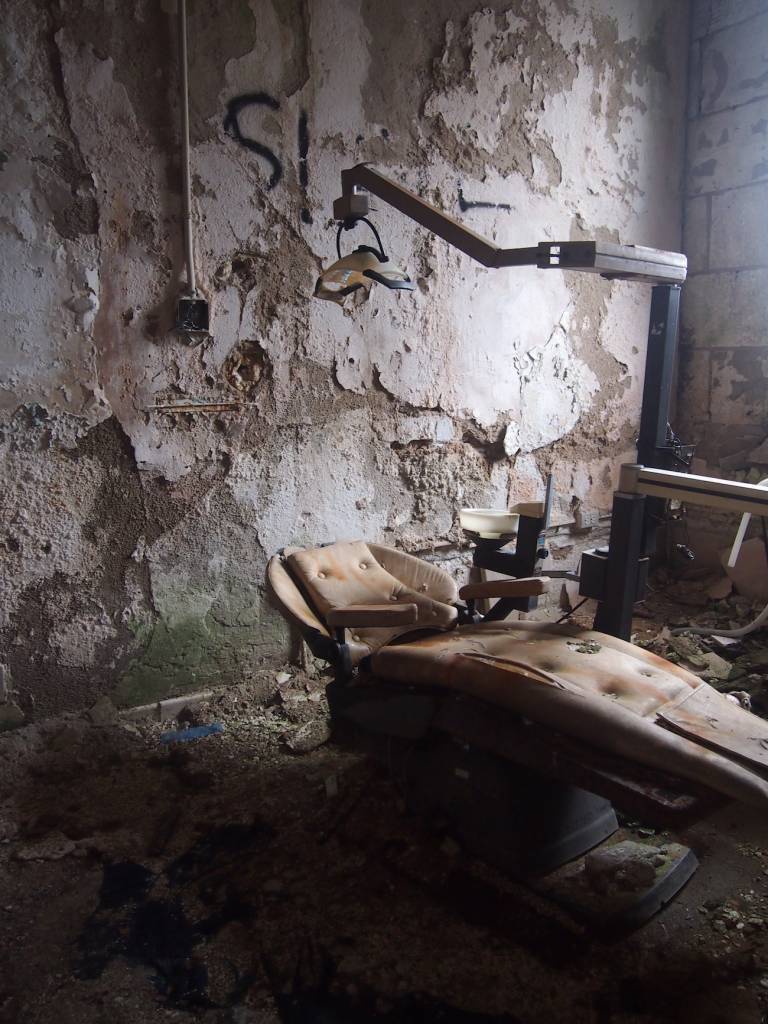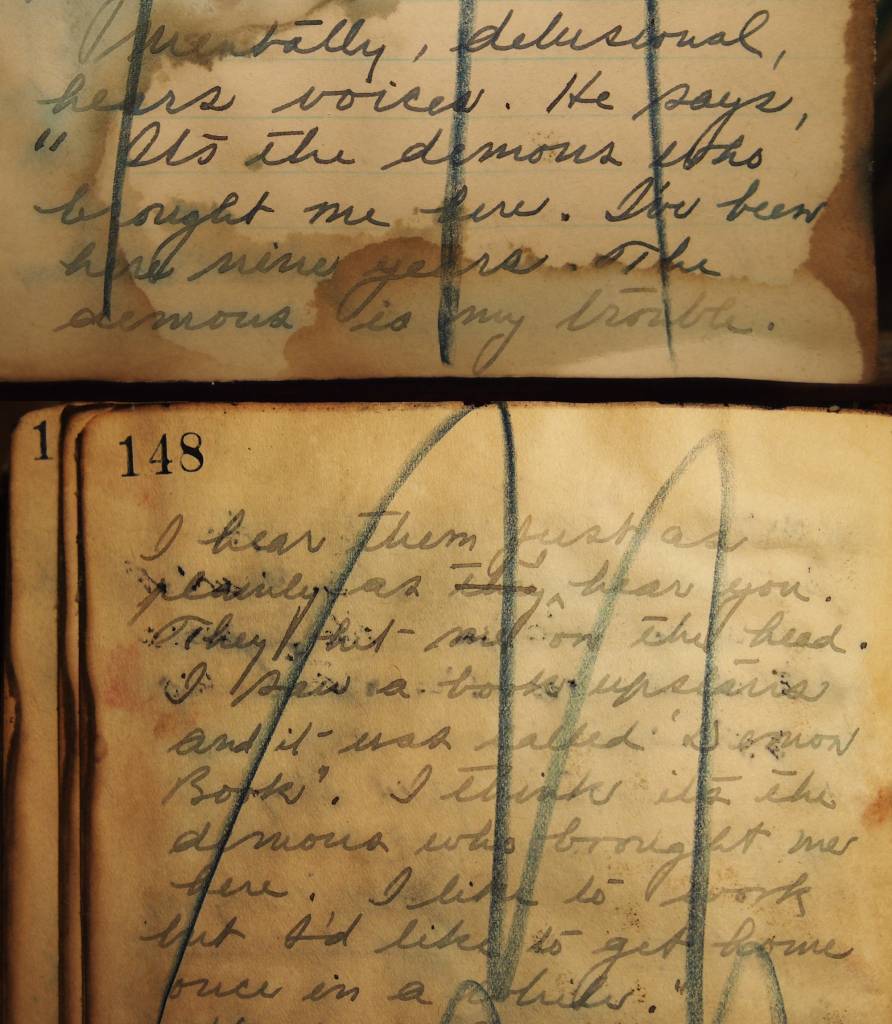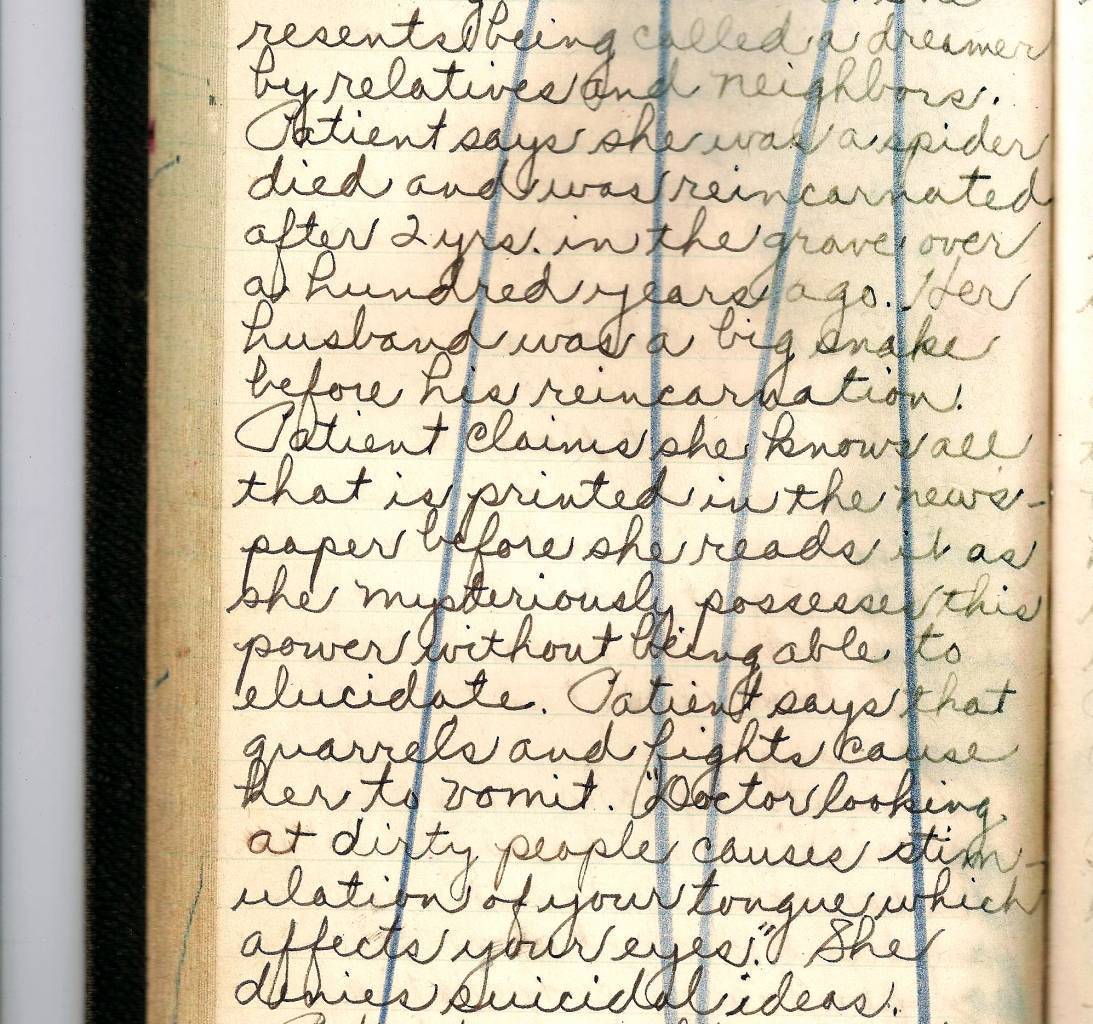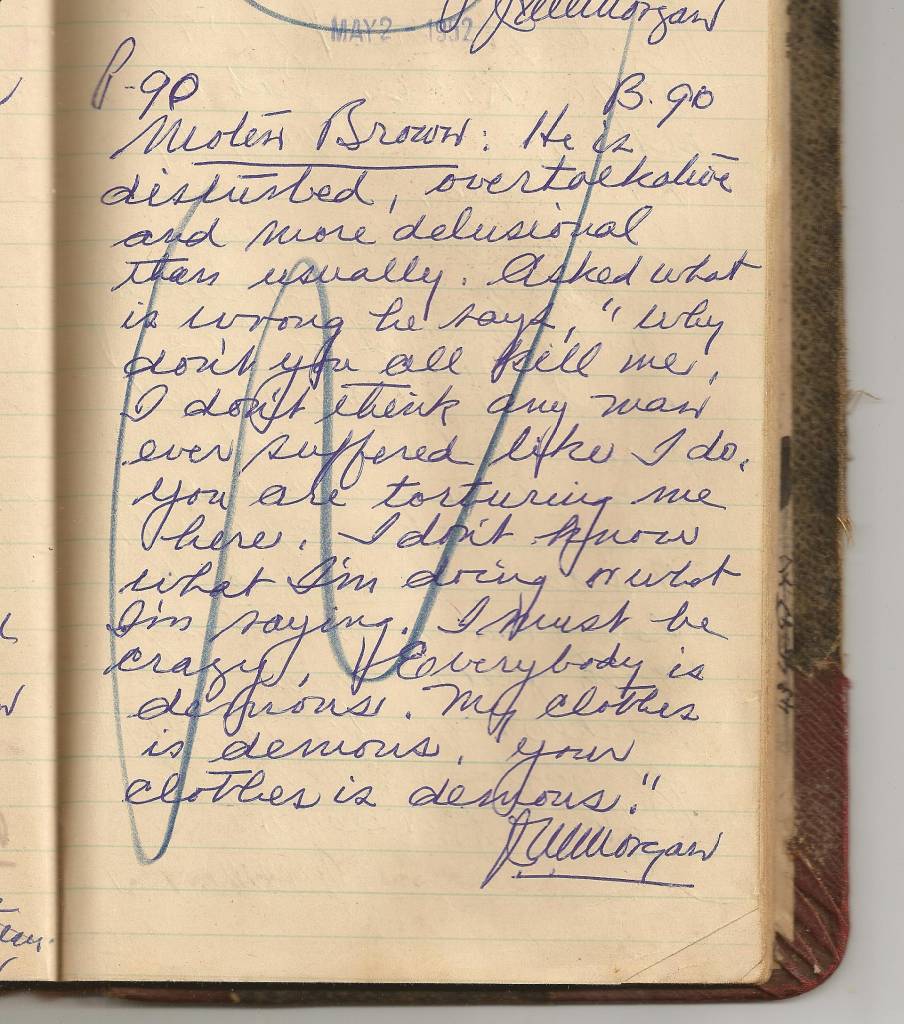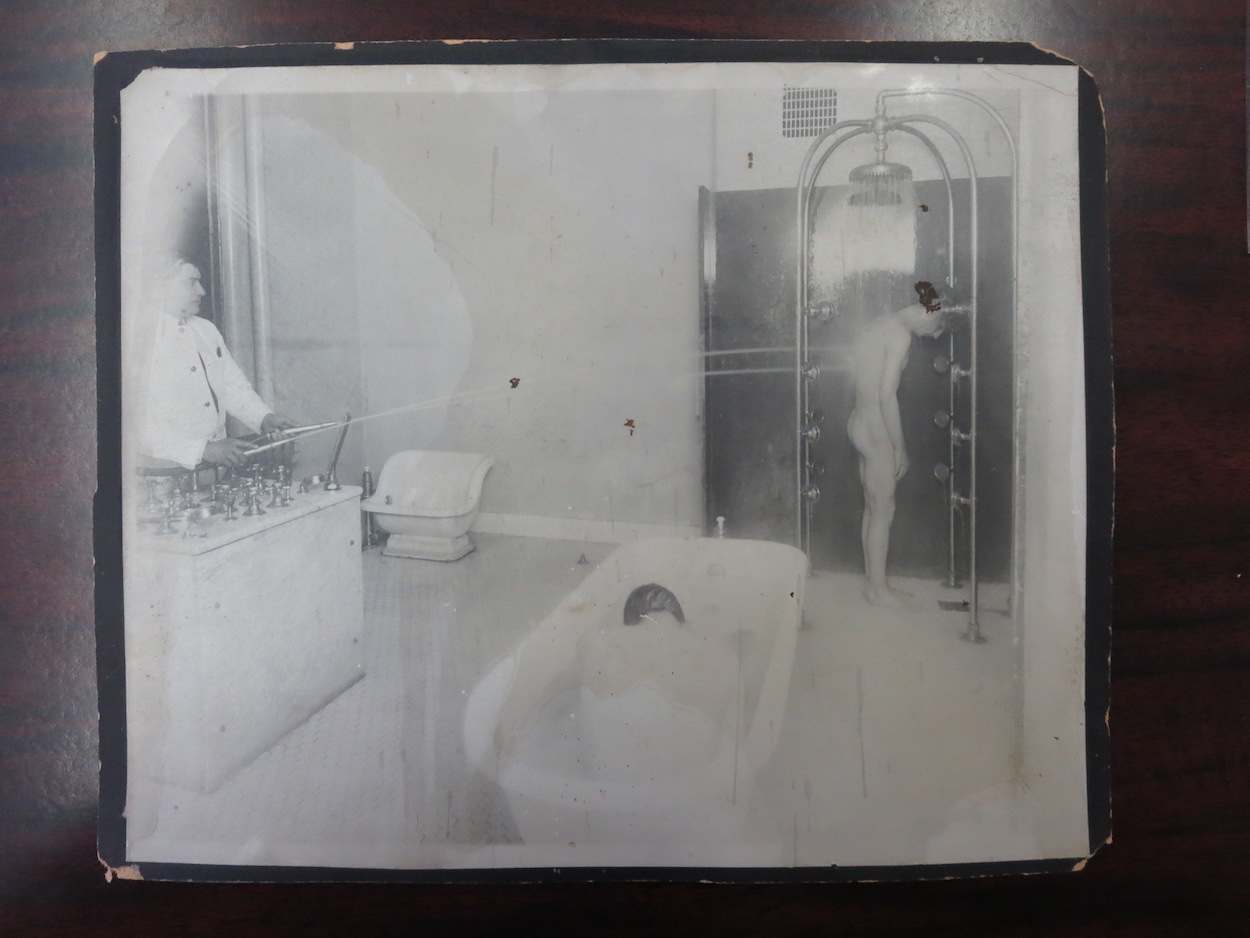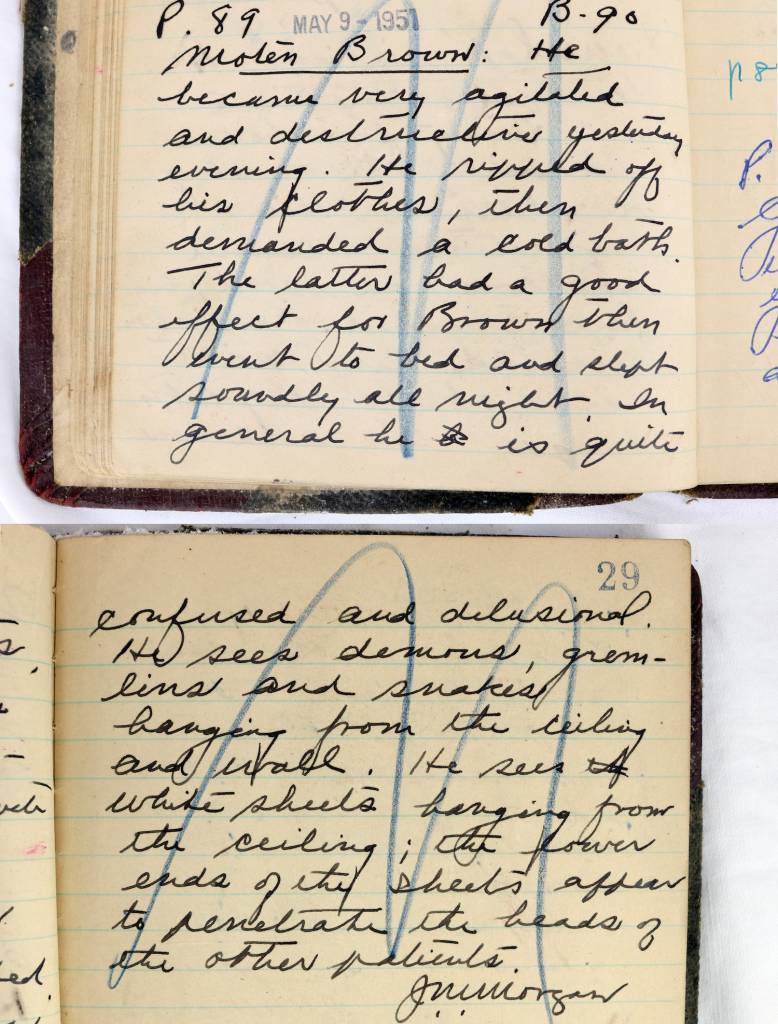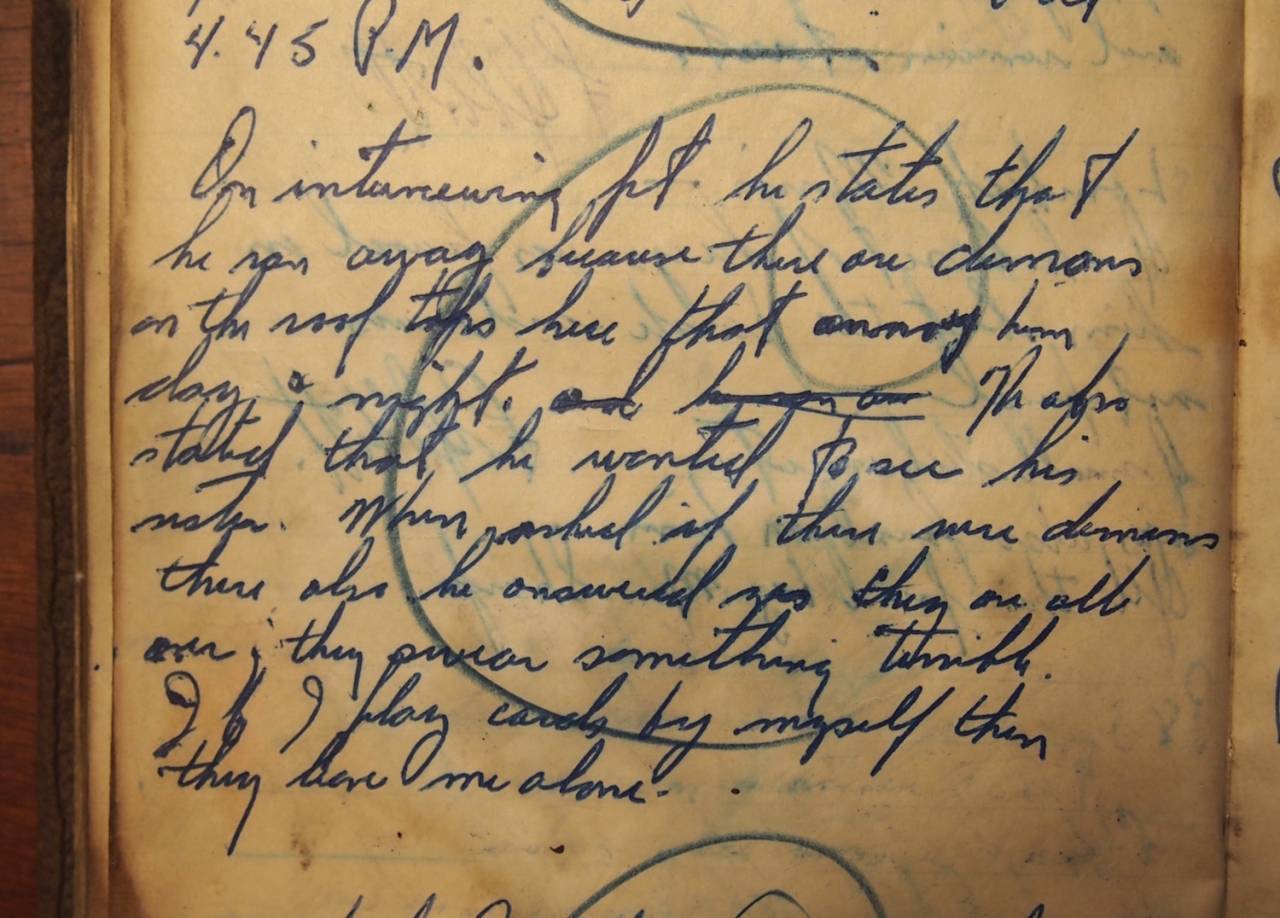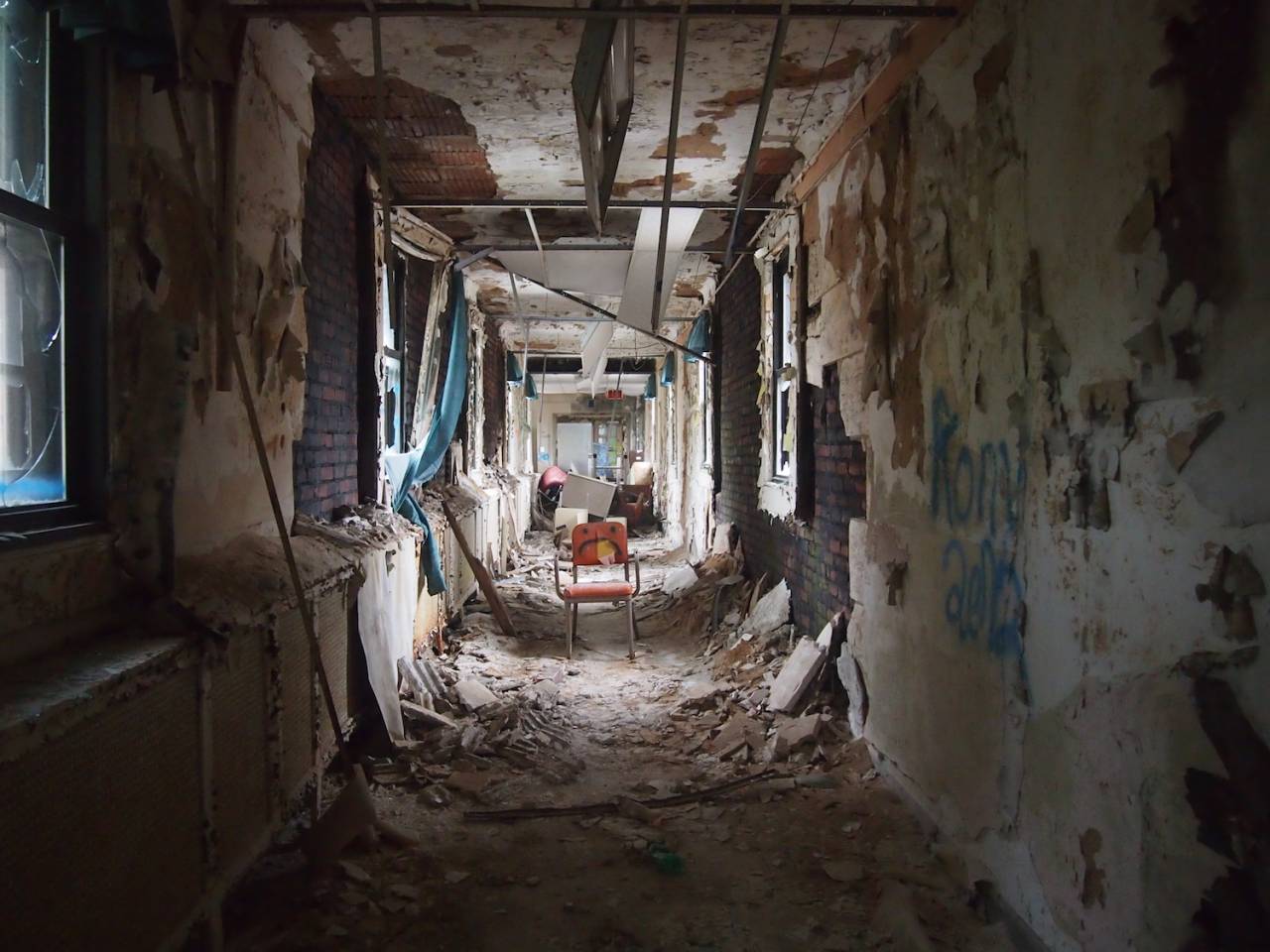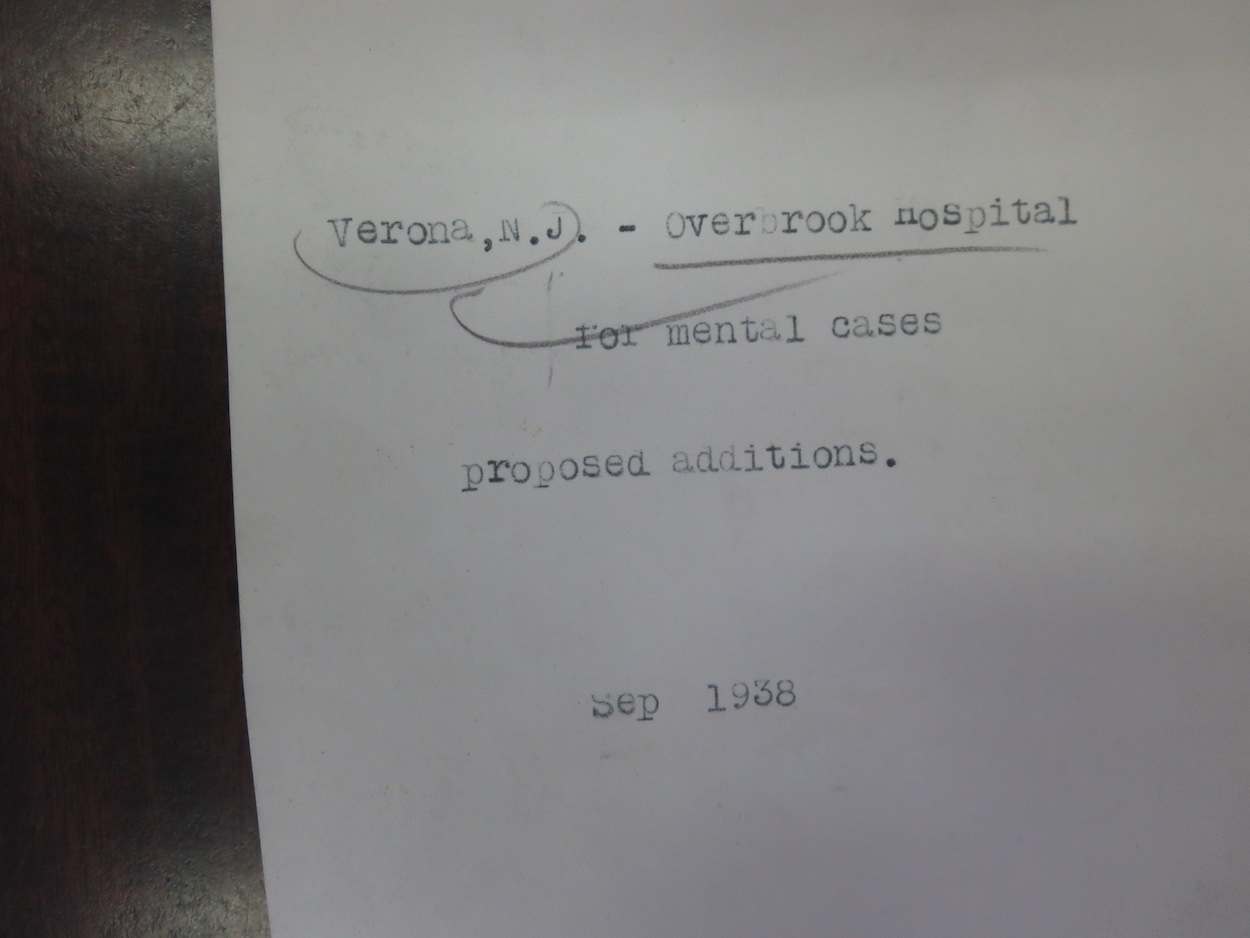In 1896, officials in Essex County, New Jersey, earmarked land for the construction of a hospital for mental health. The Essex County Asylum for the Insane became known as Overbrook, due to its location just beyond the Peckman River. Locals dubbed the labyrinthine center ‘The Bin’. It closed in 2007.
We have featured the history of mental health treatment elsewhere on flashbak. We’ve read the rules by which patients were controlled, the myriad and macabre ways a woman could end up in an asylum, seen the patients’ art, recalled the race riots, and seen haunting portraits of the people transformed by bars and harsh regimes into inmates. Mental health care has come a long way in the past decades. But the debilitating horror of mental illness remains largely misunderstood and misdiagnosed.
Once completed the campus had over a dozen buildings on its 90 acres, most of them connected via miles of subterranean tunnels running under the grounds. The tunnels remain today, a maze-like collection of pitch black and partially flooded tubes…
In the great depression large numbers of homeless found refuge here, but over-crowding and heavily rationed food made living conditions very poor. Following World War II, there was a large influx of patients suffering from ‘shell shock’ and post-traumatic stress disorders. The asylum became extremely overcrowded and staff was hard-pressed to manage the needs of so many patients. Accounts of neglect, starvation, escapes, and suicides were reported. All told, over ten thousand people died while confined within Overbrooks walls.
The numbers are huge. To focus on one life makes the place more human. Below are case notes and letters from patients.
In the early half of the twentieth century, Overbrook was at full capacity. In the 1940s and 50s, thousands of patients were housed at the Fairview Avenue facility at any given time. The facility was so large that it had its own train stop on the Caldwell Branch of the Erie Railroad, used to transport the massive amounts of coal and fuel needed to run the hospital complex. Patients were fed largely by food grown in huge farming field located on the hospital’s property, which they also worked as part of their rehabilitative occupational therapy.
Inmates from the nearby Essex County Jail annex also worked the farm, as well as tended to the many cows that provided dairy products for the patients of Overbrook. A salaried farmer lived on the Overbrook grounds to oversee these operations – in 1920, the at that time exorbitantly priced $50,000 home built for the “Overbrook farmer” created a high amount of controversy. A bakery and firehouse also stood on the hospital complex’s grounds, further cementing its status as a strange town within a town. Overbrook even had its own semi-professional baseball team that competed with teams from neighboring towns!
On December 21, 1917, The New York Times published an article that detailed what may be one of the worst tragedies to occur at Overbrook – the failure of a set of boilers during a cold wave that resulted in the deaths of 24 patients in 20 days. Here’s some quotes from the paper of record:
“The 1,800 insane patients at the Essex County Hospital, at Cedar Grove, NJ, are sffering serious discomfort and in some cases incurring danger from the practically complete collapse of the heating and lighting plant of the institution. The sleeping quarters of the inmates are practically without heat, and have been so during the recent cold snap… the management of the institution has even been trying to borrow a locomotive from one of the railroads to furnish steam for heating and power.
During the twenty days since the first of December there have been twenty-four deaths in the institution, as against eight for the entire month last year. There have also been thirty-two cases of frostbite in the last three weeks.”
All pictures are courtesy of Rex Young, whose Facebook page is a cavalcade of wonder.
Would you like to support Flashbak?
Please consider making a donation to our site. We don't want to rely on ads to bring you the best of visual culture. You can also support us by signing up to our Mailing List. And you can also follow us on Facebook, Instagram and Twitter. For great art and culture delivered to your door, visit our shop.
